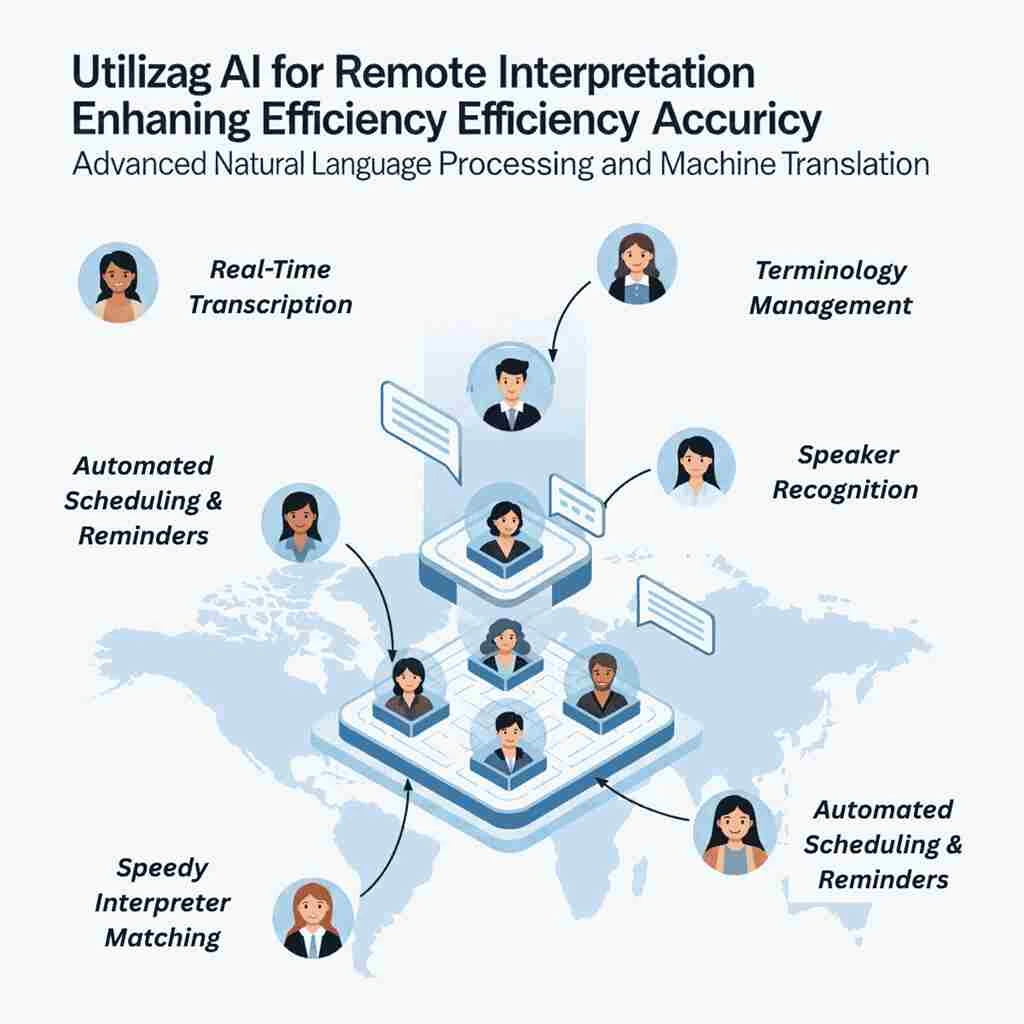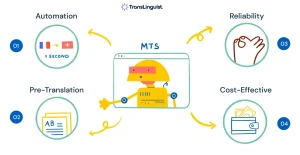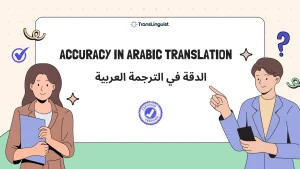In an increasingly interconnected world, communication in all languages is more important than ever. Whether it is during global business meetings, telehealth consultations, or remote legal hearings, interpreting services are critical. With remote and virtual access becoming more prevalent, interpreting services will also advance, and now AI will help facilitate that transition.
The Transition to Remote Interpretation
Historically, interpretation has been an in-person service, dependent on geographic area and availability. Before COVID-19, the presence of remote services existed, as it was dependent on the technology and timing of the client. The pandemic hastened the integration of remote services in unprecedented ways, but also presented some challenges with remote interpretation: we had audio quality issues, delays or outages of internet connections, and speaker clarity/understanding when communicating. Merging this into a remote portfolio, the interpretation industry sought to use technology as a tool to overcome these limitations, and as AI for remote interpretation continues to advance, we expect continued improvement.
AI Is Improving Accuracy
Real-Time Transcription
AI-based transcription solutions have gained sufficient accuracy to transcribe spoken dialogue and can detect dialects, accents, and context. This is extremely useful for interpreters to follow a discussion with more accuracy, particularly in high-risk situations where a misheard word could alter the outcome. Translinguist
Terminology Management
AI systems learn and track industry-specific terminology (legal, medical, financial, etc.) and provide a framework that helps interpreters understand how to use the terms correctly, producing more uniform and reliable exchanges.
Speaker Recognition
Highly advanced AI can identify multiple speakers with precision, like in virtual restrooms, reducing ambiguity and improving interpreter attention. This is useful in remote courtrooms or multinational business meetings.
Increasing Efficiency by Automation
Speedy Interpreter Matching
With this technology, interpreter profiles can be analyzed in real-time by several parameters and client requirements for immediate matching of the right person to the job, according to language pair, level of expertise or specialization, and even availability, which nearly translates to no downtime.
Automated Scheduling & Reminders
Virtual interpretation platforms that are connected to AI can automatically schedule the interaction or appointment, send confirmations, and in real-time, let clients know about any changes. Enabling language service providers to decrease the admin work allows for a better workflow.
Analytics Powered by Artificial Intelligence
Clients and LSPs can receive analytics after sessions on accuracy, how long the session took, interpreter performance, and client satisfaction. This can also help teams improve their language service delivery over time.
The Human-AI Collaboration
AI enhances remote interpretation; it does not replace the interpreter. Instead, it helps professionals by removing friction points to enable the human aspects of interpretation—tone, emotion, and cultural nuance.
At TransLinguist, we are believers in the collaboration of human talent and AI-enabled capabilities. Our remote interpretation solutions provide the most advanced technology to give you accurate, dependable, and culturally aware communication—anytime and anywhere.
Final Thoughts
AI is not only changing the way we deliver interpretation, but it is also changing what is possible. It provides improved accuracy, less time lag, and increased access – it is the new benchmark for global communication in remote interpretation.
📞 Want to get started? Book a demo with TransLinguist today to see how AI-supported interpretation can facilitate your business engagements across borders!
FAQs
How can AI be used to improve efficiency?
A.I. automates operation in the field of remote interpretation and makes intelligent decisions. Interpreter matching according to expertise and availability happens quickly. A scheduler and reminder system is automated.Real-time analytics after session completion adds an extension to this. All this leads to transparency in the workflow and fewer minutes where the staff waits on the floor. It also helps the language service providers shed some of the burdens associated with administration.
How does AI improve accuracy?
AI improves the accuracy of an interpretation by using real-time transcription, multi-speaker recognition, and specialized terminologies. All these help the interpreters in being more accurate in grasping the flow of conversations and thus cut down the errors to a greater extent, particularly in high-impact settings like medical or judicial environments.
What is the role of AI in enhancing diagnostic accuracy?
In remote interpretation concerning healthcare (example: telemedicine), an AI transcription of medical terms known, context-aware communication, and the interpretation limits would reduce the understanding gap between patients and providers, so the idea would be sharper in its communication, which would benefit overall diagnosis improvements and treatment choices in the future.
What role is being played by artificial intelligence in superior diagnosis?
AI plays a crucial role in telehealth for effective communication, supporting more accurate medical evaluations.
How does artificial intelligence innovate enhancing the accuracy of quality control?
It gives feedback on the results and satisfaction so that service quality can be honed over time.



